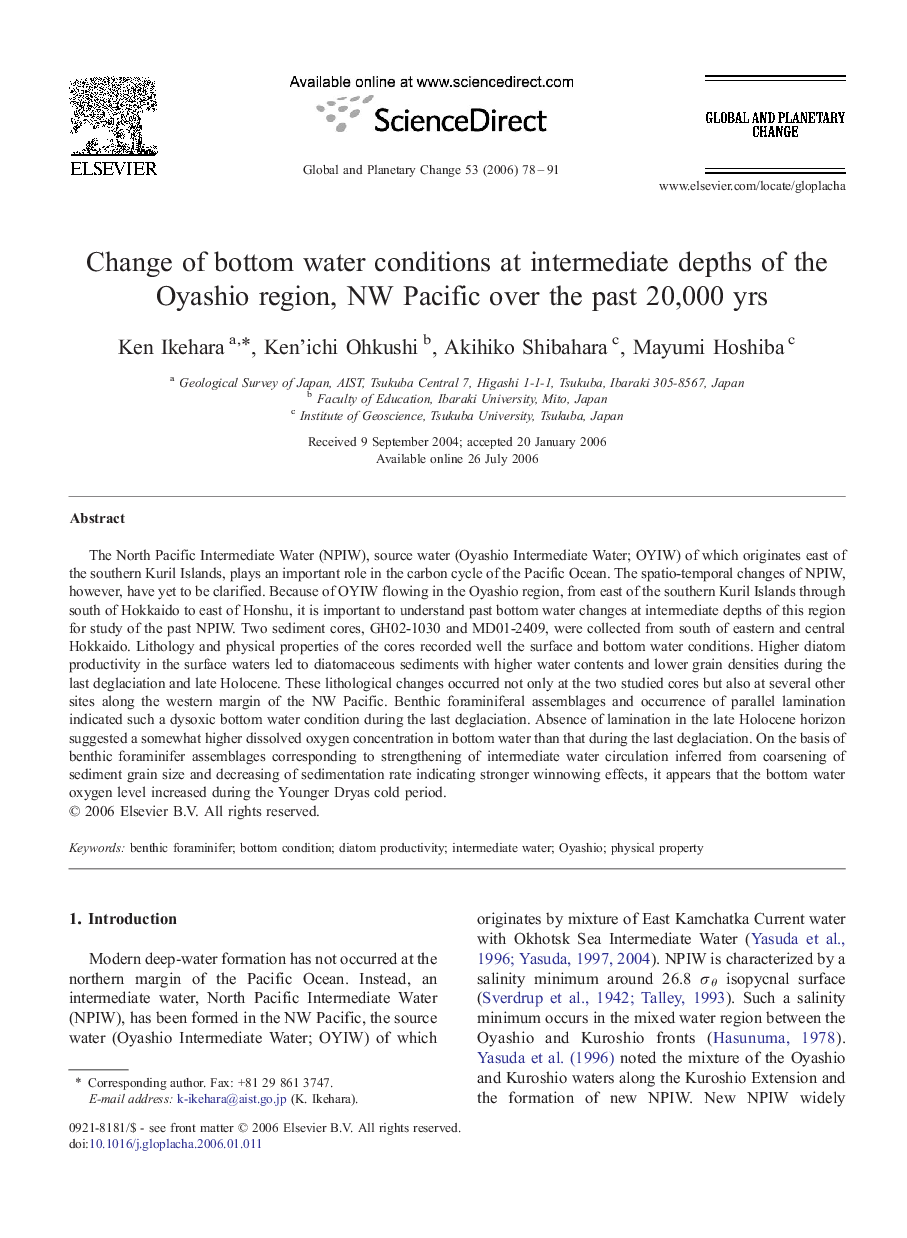| Article ID | Journal | Published Year | Pages | File Type |
|---|---|---|---|---|
| 4464548 | Global and Planetary Change | 2006 | 14 Pages |
The North Pacific Intermediate Water (NPIW), source water (Oyashio Intermediate Water; OYIW) of which originates east of the southern Kuril Islands, plays an important role in the carbon cycle of the Pacific Ocean. The spatio-temporal changes of NPIW, however, have yet to be clarified. Because of OYIW flowing in the Oyashio region, from east of the southern Kuril Islands through south of Hokkaido to east of Honshu, it is important to understand past bottom water changes at intermediate depths of this region for study of the past NPIW. Two sediment cores, GH02-1030 and MD01-2409, were collected from south of eastern and central Hokkaido. Lithology and physical properties of the cores recorded well the surface and bottom water conditions. Higher diatom productivity in the surface waters led to diatomaceous sediments with higher water contents and lower grain densities during the last deglaciation and late Holocene. These lithological changes occurred not only at the two studied cores but also at several other sites along the western margin of the NW Pacific. Benthic foraminiferal assemblages and occurrence of parallel lamination indicated such a dysoxic bottom water condition during the last deglaciation. Absence of lamination in the late Holocene horizon suggested a somewhat higher dissolved oxygen concentration in bottom water than that during the last deglaciation. On the basis of benthic foraminifer assemblages corresponding to strengthening of intermediate water circulation inferred from coarsening of sediment grain size and decreasing of sedimentation rate indicating stronger winnowing effects, it appears that the bottom water oxygen level increased during the Younger Dryas cold period.
